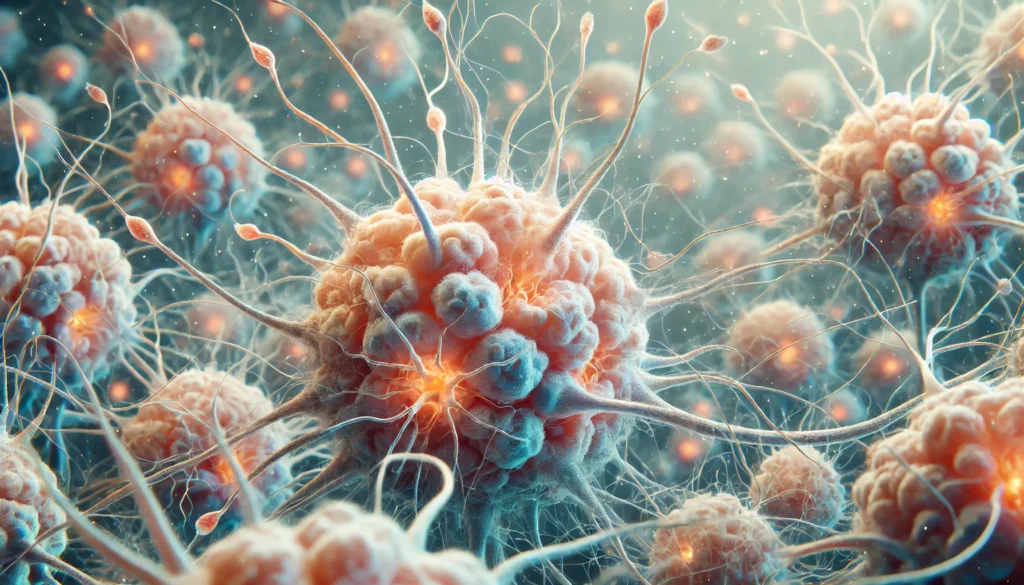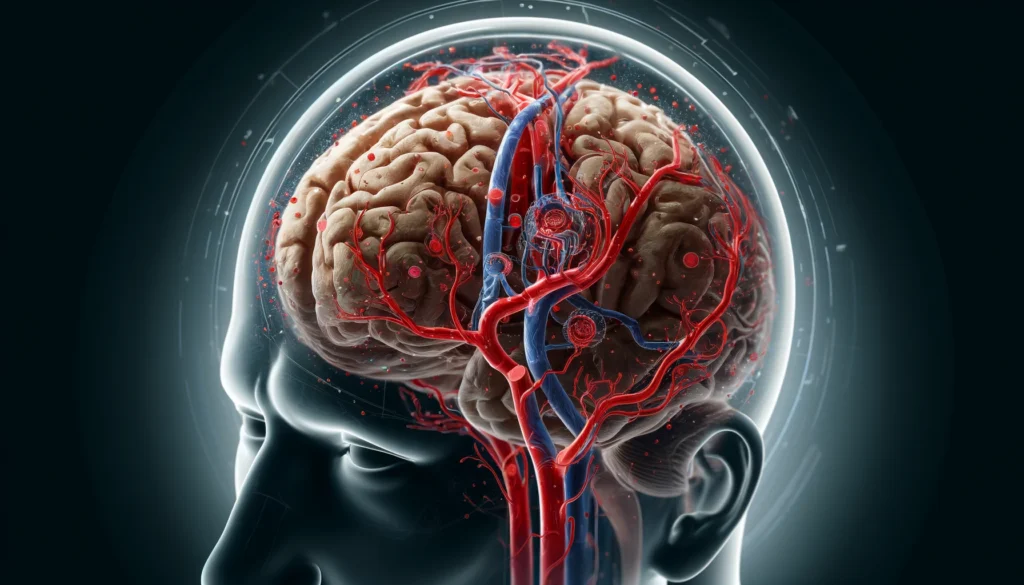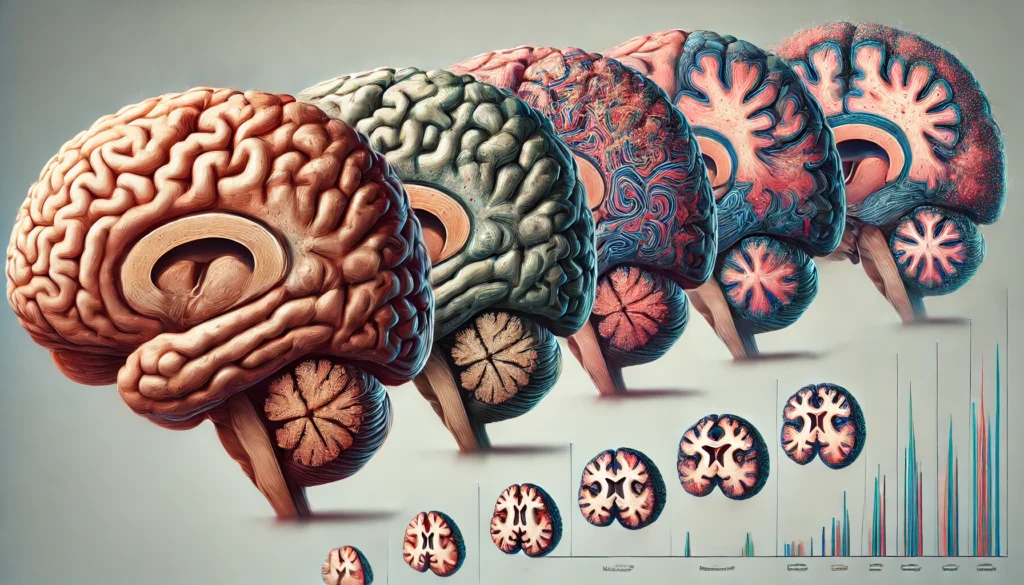Dementia, a term that often evokes a sense of fear and uncertainty, is a complex condition that affects millions worldwide. Despite its prevalence, the intricacies of dementia are not widely understood. This article aims to demystify the pathogenesis of dementia, offering insights into the underlying causes and mechanisms that lead to cognitive decline. With a somewhat casual tone, we’ll explore the pathology of dementia, weaving in historical context, current trends, and future implications.
You may also like: Tips to Improve Low Average Memory Performance
What is Dementia?
Dementia is not a single disease but a collection of symptoms affecting cognitive functions such as memory, reasoning, and communication. The most common type is Alzheimer’s disease, but other forms include vascular dementia, Lewy body dementia, and frontotemporal dementia. Each type has its distinct pathophysiological features, yet they all share the common theme of progressive cognitive decline.
Different Types of Dementia
Alzheimer’s disease is the most prevalent form, characterized by memory loss and confusion. It is often associated with the presence of amyloid plaques and tau tangles in the brain. Vascular dementia, on the other hand, is linked to impaired blood flow to the brain, often following strokes. Lewy body dementia presents with symptoms similar to Parkinson’s disease, including movement disorders and hallucinations. Frontotemporal dementia primarily affects personality and behavior, with early onset compared to other types.
Common Symptoms Across Dementias
While each type of dementia has unique characteristics, some symptoms are common across all forms. Memory impairment, particularly short-term memory, is a hallmark symptom. Difficulties with communication, such as finding the right words, can also occur. Additionally, individuals may experience disorientation, mood changes, and difficulty performing familiar tasks. Understanding these symptoms is crucial for early diagnosis and management.
The Impact of Dementia on Daily Life
Dementia significantly impacts daily life, not only for those affected but also for their caregivers. Routine activities become challenging, requiring assistance and support. This can lead to increased stress for both individuals and their families. Social isolation is another common issue, as communication difficulties may hinder social interactions. Awareness and education about dementia can help mitigate these challenges.
Historical Context of Dementia Research
Historically, dementia was viewed as a natural part of aging, with little understanding of its specific causes. The term “dementia” itself is derived from the Latin word “demens,” meaning “out of one’s mind.” It wasn’t until the early 20th century that Alzheimer’s disease was identified as a specific condition, thanks to the groundbreaking work of Dr. Alois Alzheimer. Since then, our understanding of dementia has expanded significantly, yet the quest to fully unravel its complexities continues.
Early Perceptions and Misconceptions
In ancient times, dementia was often attributed to supernatural or mystical causes. It was seen as a natural decline associated with aging, and little effort was made to understand or treat it. This perception persisted for centuries, contributing to stigma and misunderstanding. It wasn’t until the Enlightenment that scientific inquiry began to challenge these beliefs, setting the stage for modern research.
Dr. Alois Alzheimer’s Contribution
Dr. Alois Alzheimer made a pivotal contribution to dementia research by identifying Alzheimer’s disease as a distinct condition. In 1906, he presented his findings on a patient with memory loss, language problems, and unpredictable behavior. Upon examining the patient’s brain post-mortem, he discovered plaques and tangles, which became key pathological features of Alzheimer’s disease. His work laid the foundation for future research into the biological mechanisms of dementia.

Evolution of Dementia Research
Since Dr. Alzheimer’s discovery, dementia research has evolved significantly. The focus has shifted from merely describing symptoms to understanding underlying mechanisms. Advances in technology, such as neuroimaging and genetic analysis, have provided deeper insights into the brain changes associated with dementia. Despite these advances, the complexity of dementia means that many questions remain unanswered, driving ongoing research efforts.
The Pathogenesis of Dementia
Understanding the pathogenesis of dementia involves exploring the biological mechanisms that lead to its development. Here, we delve into the intricate processes that contribute to cognitive decline.
Neurodegeneration: The Core of Cognitive Decline
At the heart of dementia lies neurodegeneration, the progressive loss of structure or function of neurons, including death of neurons. This process is central to the pathology of dementia and is driven by several factors:
- Protein Misfolding and Aggregation: In Alzheimer’s disease, the accumulation of beta-amyloid plaques and tau tangles disrupts neuronal communication and leads to cell death. Similarly, Lewy body dementia is characterized by the presence of abnormal alpha-synuclein proteins. These misfolded proteins interfere with normal brain function, causing progressive damage.
- Vascular Damage: Vascular dementia results from conditions that block or reduce blood flow to the brain, depriving neurons of oxygen and nutrients. This can result from strokes or chronic hypertension. The brain’s delicate vascular system is crucial for delivering necessary nutrients, and any disruption can have severe consequences for cognitive health.
- Inflammation: Chronic neuroinflammation is increasingly recognized as a contributing factor to dementia. Microglia, the brain’s immune cells, become overactive, leading to persistent inflammation that damages brain tissue. This inflammatory response is thought to exacerbate neurodegenerative processes, further contributing to cognitive decline.
Genetics and Environmental Factors
Genetic predispositions play a significant role in dementia, particularly in early-onset forms. Mutations in genes such as APP, PSEN1, and PSEN2 are linked to familial Alzheimer’s disease. However, most cases of dementia are sporadic, with age being the most significant risk factor.
- Role of Genetic Mutations: Specific genetic mutations are linked to increased dementia risk. For instance, the APOE ε4 allele is associated with a higher risk of Alzheimer’s disease. Understanding these genetic factors can aid in identifying individuals at risk and developing targeted interventions.
- Environmental Influences on Dementia Risk: Environmental factors, including lifestyle choices, also contribute to dementia risk. Poor cardiovascular health, smoking, and lack of physical activity are known to increase susceptibility to cognitive decline. Conversely, maintaining a healthy diet, regular exercise, and mental stimulation can help mitigate risk.
- Age: The Greatest Risk Factor: Age is the most significant risk factor for dementia, with prevalence increasing significantly in individuals over 65. As the global population ages, understanding how age-related changes contribute to dementia becomes increasingly important. Research focuses on identifying ways to slow or prevent age-related cognitive decline.
Current Trends in Dementia Research
In recent years, dementia research has shifted towards early detection and intervention. Identifying biomarkers for early diagnosis is a key focus, as it offers the potential for more effective treatments. Neuroimaging techniques, such as PET and MRI scans, are being refined to detect changes in brain structure and function before clinical symptoms emerge.
Advances in Early Detection
- Biomarkers and Neuroimaging: Researchers are working to identify biomarkers that can detect dementia at its earliest stages. Advances in neuroimaging allow for visualization of amyloid and tau accumulation, providing insights into the disease’s progression. Early detection through these methods could enable timely interventions.
- Blood Tests and Genetic Screening: Blood tests to detect biomarkers associated with dementia are in development, offering a less invasive option compared to brain imaging. Additionally, genetic screening can identify individuals at higher risk, paving the way for personalized preventive strategies.
- Cognitive Assessments and Digital Tools: Digital tools and cognitive assessments are being developed to monitor cognitive changes over time. These tools can aid in detecting subtle changes that precede clinical symptoms, facilitating early intervention.
Disease-Modifying Therapies
- Targeting Amyloid and Tau: While current treatments primarily address symptoms, new drugs aim to target the underlying pathophysiological processes, such as reducing amyloid plaques or tau tangles. These disease-modifying therapies hold promise for altering the course of dementia.
- Anti-Inflammatory Strategies: Given the role of inflammation in dementia, anti-inflammatory treatments are being explored. These therapies aim to reduce neuroinflammation, potentially slowing disease progression.
- Lifestyle Interventions: Lifestyle interventions, including dietary changes and exercise programs, are being studied for their potential to modify disease progression. Such interventions could complement pharmacological treatments, offering a holistic approach to dementia management.
Future Implications and the Role of Technology
The future of dementia research holds exciting possibilities, with technology playing a pivotal role. Artificial intelligence (AI) is being harnessed to analyze vast datasets, identifying patterns and potential therapeutic targets. AI-driven tools are also being developed to assist with early diagnosis and personalized treatment plans.
AI in Dementia Research
- Data Analysis and Pattern Recognition: AI algorithms can process large datasets, identifying patterns that may indicate early signs of dementia. This capability enhances our understanding of the disease and informs the development of new treatments.
- AI-Driven Diagnostic Tools: AI is being used to develop diagnostic tools that can analyze imaging and genetic data, providing more accurate and early diagnoses. These tools hold the potential to revolutionize how we approach dementia detection.
- Personalized Treatment Approaches: AI can assist in creating personalized treatment plans based on an individual’s genetic profile and disease progression. This tailored approach could improve treatment outcomes and quality of life for individuals with dementia.
Genomics and Precision Medicine
- Genetic Profiling for Risk Assessment: Advances in genomics allow for comprehensive genetic profiling, identifying individuals at risk of dementia. This information can guide preventive measures and early interventions.
- Customized Therapeutic Interventions: Precision medicine aims to develop treatments tailored to an individual’s genetic makeup. This approach could lead to more effective therapies with fewer side effects.
- Ethical Considerations in Genomic Research: As genomic research advances, ethical considerations regarding data privacy and access to genetic information become increasingly important. Balancing innovation with ethical responsibility is crucial for the future of dementia research.

Practical Advice for Optimizing Brain Health
While the scientific community continues to unravel the complexities of dementia, there are practical steps individuals can take to support brain health:
Physical Activity and Brain Health
- Stay Physically Active: Regular exercise promotes cardiovascular health and stimulates the production of neurotrophic factors that support neuron growth and survival. Activities such as walking, swimming, and strength training can have profound effects on brain health.
- Incorporating Exercise into Daily Life: Simple activities like taking the stairs, gardening, or participating in group sports can be beneficial. Establishing a routine and setting achievable goals can help maintain consistency in physical activity.
- Exercise and Mental Well-being: Physical activity not only benefits the body but also enhances mental well-being. Regular exercise can reduce stress, anxiety, and depression, contributing to overall cognitive health.
Mental Stimulation and Cognitive Reserve
- Engage in Mental Activities: Keeping the brain active through puzzles, reading, or learning new skills can enhance cognitive reserve. Activities that challenge the brain and require problem-solving can be particularly beneficial.
- Lifelong Learning and Brain Health: Pursuing lifelong learning through courses, workshops, or hobbies can stimulate the brain and promote neuroplasticity. Staying intellectually engaged fosters resilience against cognitive decline.
- Technology and Mental Engagement: Digital platforms offer a variety of cognitive training programs and apps. These tools provide accessible and diverse options for mental stimulation, catering to different interests and abilities.
Nutrition and Brain Health
- Maintain a Balanced Diet: A diet rich in antioxidants, omega-3 fatty acids, and vitamins supports neuronal health and reduces inflammation. Incorporating fruits, vegetables, nuts, and fish into meals can nourish the brain.
- The Role of Specific Nutrients: Certain nutrients, such as vitamin D, B vitamins, and flavonoids, are associated with cognitive health. Understanding their role and ensuring adequate intake can be beneficial.
- Dietary Patterns and Brain Health: Adopting dietary patterns like the Mediterranean or DASH diet, known for their brain-protective properties, can be advantageous. These diets emphasize whole foods, healthy fats, and minimal processed foods.
Social Engagement and Cognitive Well-being
- Foster Social Connections: Social engagement is linked to better cognitive outcomes and can help delay the onset of dementia symptoms. Maintaining relationships and participating in social activities can provide mental stimulation and emotional support.
- Community Involvement and Brain Health: Joining clubs, volunteer groups, or community events encourages social interaction and a sense of belonging. These activities offer opportunities for meaningful connections and shared experiences.
- Technology and Social Interaction: Technology offers innovative ways to stay connected, especially for those with mobility constraints. Video calls, social media, and online communities can facilitate social engagement and reduce feelings of isolation.

Conclusion
Dementia is a multifaceted condition with a complex pathogenesis that involves genetic, environmental, and biological factors. As research advances, our understanding of dementia continues to evolve, paving the way for more effective interventions and preventive strategies. By staying informed and adopting healthy lifestyle choices, we can contribute to better brain health and potentially reduce the risk of cognitive decline.
In navigating the path of dementia, it’s crucial to remember that knowledge is power. By understanding the pathology behind dementia, we empower ourselves and others to take proactive steps towards maintaining cognitive well-being. With continued research and collaboration, we can work towards a future where dementia is better understood, managed, and ultimately prevented.
Further Reading:
Important Note: The information contained in this article is for general informational purposes only, and should not be construed as health or medical advice, nor is it intended to diagnose, prevent, treat, or cure any disease or health condition. Before embarking on any diet, fitness regimen, or program of nutritional supplementation, it is advisable to consult your healthcare professional in order to determine its safety and probable efficacy in terms of your individual state of health.
Regarding Nutritional Supplements Or Other Non-Prescription Health Products: If any nutritional supplements or other non-prescription health products are mentioned in the foregoing article, any claims or statements made about them have not been evaluated by the U.S. Food and Drug Administration, and such nutritional supplements or other health products are not intended to diagnose, treat, cure, or prevent any disease.


